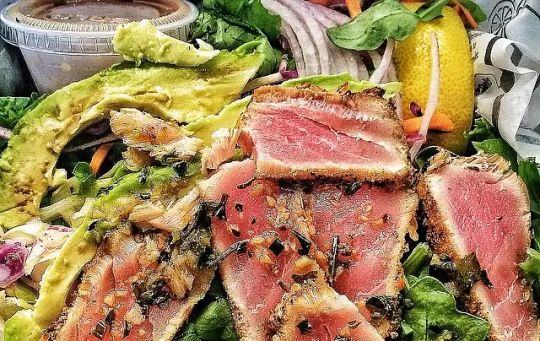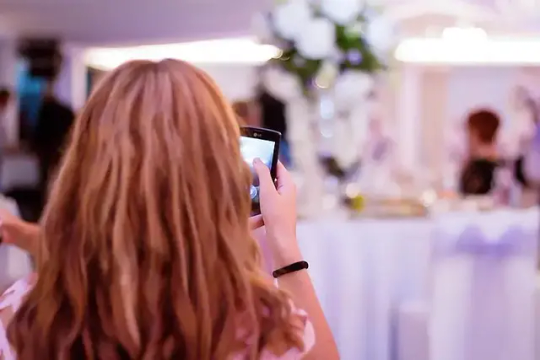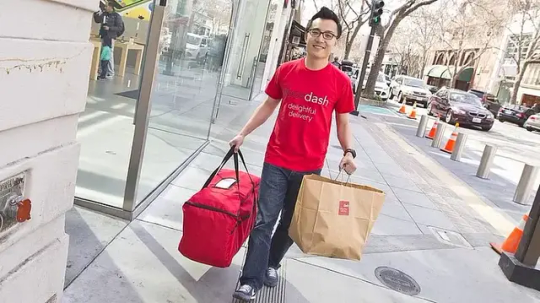#marco verch
Text
Flickr to copyleft trolls: drop dead

Today’s a big day for users of Creative Commons images: Flickr has declared zero tolerance for copyleft trolls, predators who exploit a bug in out-of-date versions of the CC licenses in order to threaten good-faith users of CC images who make minor errors in the way they credit the images.
If you’d like an essay-formatted version of this post to read or share, here’s a link to it on pluralistic.net, my surveillance-free, ad-free, tracker-free blog:
https://pluralistic.net/2023/04/01/pixsynnussija#pilkunnussija
First things first: Flickr’s new community guidelines prohibit copyleft trolling: “Failure to allow a good faith reuser the opportunity to correct errors is against the intent of the license and not in line with the values of our community, and can result in your account being removed.”
https://www.flickr.com/help/guidelines
If you are targeted by a copyleft troll who demands that you pay them because of minor errors in your Creative Commons attribution, here’s how to report them and get them kicked off Flickr forever:
https://www.flickrhelp.com/hc/en-us/articles/4404057906068-How-to-report-Community-Guidelines-violations
Now, some background. Early versions of the Creative Commons licenses have a bug, a clause that says that the permissions conferred by CC licenses “terminate automatically upon any breach” — that is, if you violate any term of the license, it ceases to be in effect:
https://doctorow.medium.com/a-bug-in-early-creative-commons-licenses-has-enabled-a-new-breed-of-superpredator-5f6360713299
Core to the CC licenses is the idea of attribution. When you use a Creative Commons image, you must name the creator and link to the original, and name the license and link to it. Many CC users don’t understand this; they use an image and add something like “Image: Cory Doctorow/Creative Commons” with no links or specific licenses.
Under the pre-4.0 versions of the license, this can be construed as a “breach” which “terminates” the CC license. That’s where the copyleft trolls come in.
Copyleft trolls post CC-licensed stock art and then wait for a naive person to make a minor attribution error, and then they pounce, sending a legal threat and a speculative invoice demanding hundreds or thousands of dollars, under the threat of a $150,000 statutory damages award.
This is deeply unethical conduct. As I wrote when I was targeted by one of these creeps:
If you put a CC license on your work, its explicit message is, “I want you to re-use this.” Not “I am a pedantic asshole with a fetish for well-formed attribution strings.” The point of CC is not to teach the world to write attribution strings: it is to facilitate sharing and re-use. If you are a good-faith user of CC licenses, then your response to an incorrect attribution string should be a request to correct it, not a threat to sue for $150,000 in statutory damages.
Unethical as this conduct is, it’s also big business. One company, Pixsy, is responsible for a long-running shakedown campaign, working with scammy photographers to send out demand letters to unsuspecting Creative Commons users.
And many of those photographers rely on Flickr to bait their traps.
There’s a reason for this. Flickr’s early years were a period of enormous innovation. Flickr was the first mobile photo-sharing site, and it invented numerous community features that turned it into a thriving hub for photographers, amateur and professional alike. Flickr was also an interoperability pioneer, offering an API that let any user move their photos to a rival service — a tacit pledge to keep your business by being better than the rest, not by locking you in.
I know all this because I was an early advisor to Flickr, and because, in a weird way, I am partially responsible for Flickr. You see, before Flickr, I was carrying on a long-distance relationship from San Francisco with a woman in London, and we were both alpha testers for a social game called GameNeverending.
One day over breakfast with GNE’s founder Stewart Butterfield, he asked me how things were going in my romantic life. I answered that things were great, but mentioned that my girlfriend and I were struggling to share the pictures we took in our daily lives with one another. Stewart said, “Well, there’s a photo-sharing feature for GNE on the roadmap — why don’t I bump it up and we’ll see if other people use it, too?”
They did. In fact, the feature was so popular that within a few months, GNE relaunched as Flickr, jettisoning the game entirely and focusing on just that one feature. I stayed on the advisory, and one of the things I encouraged was the plan to roll out Creative Commons licenses for Flickr images — and I made sure everyone knew about it when Flickr became the first CC-enabled image site.
(I also married the woman I was carrying on that long-distance relationship with and today we have a 15 year old daughter!)
But after Flickr was sold to Yahoo, it joined Yahoo’s haunted armada of Web 2.0 ghost-ships, tossed back and forth in the storms created by the dueling princelings of Yahoo’s bloated management layer, who spent more time sabotaging one another than they did making anything anyone else wanted to use. Yahoo eventually sold off all of those holdings at fire-sale prices to Verizon, who neglected them still further.
An abandoned ship is easy picking for the rats that live in its bilges. Pixsy and its photographers actually became official Flickr partners, pitching themselves as a way for photographers who didn’t want their images shared to hunt down infringers — even as they facilitated a revolting campaign of copyleft trolling that depended on Flickr as their base of operations.
The depravity of copyleft trolls is truly boundless. Take Marco Verch, a prolific copyleft troll who hosts nearly 47,000 photos on Flickr. Verch hires low-waged gig work photographers through platforms like Upwork to take photos, then harasses people who make minor attribution errors:
https://www.computerweekly.com/news/252488167/Automated-image-recognition-How-using-free-photos-on-the-internet-can-lead-to-lawsuits-and-fines
Verch boasts that his predation lets him work for four hours a week, leaving him with ample time to focus on his hobby, running. Verch is a truly prolific predator, and his attacks have made untold numbers of victims miserable — including the small Dutch charity that was forced to shut down after paying his ransom demand. Pixsy has been Verch’s US counsel and filed dozens of suits on his behalf.
Back in 2021, I got hit by Pixsy on behalf of a photographer named Nenad Stojkovic, with a claim that I had failed to attribute his image correctly. The email threat was truly vicious, calculated to strike terror into the recipient’s heart and prompt swift payment of $600, for using a freely licensed image whose market value had been set by its creator at $0.00.
There was just one problem: I hadn’t flubbed the attribution string. I helped with the launch of Creative Commons. I was CC’s first European director. What’s more, I have decades of experience fighting bullies and trolls and I knew their threat was bullshit — no court would award them the damages they were seeking.
So I wrote about it, publishing the text of my correspondence with Pixsy’s staff and management, and calling on Flickr to make changes to prevent their tools from being abused to victimize innocent people, like forcing users with CC 2.0-licensed images to relicense them as CC 4.0, which guarantees users the right to 30 days to fix attribution strings.
The reason I thought Flickr might take this in hand is that it is finally under decent, responsive leadership — since 2018, Flickr has been owned by Smugmug, a family-owned business that really cares about photographers and the open internet.
Flickr hasn’t taken all of my suggestions yet — my understanding is that they are laboring under enormous technological debt thanks to years of neglect by Yahoo and Verizon, and even small changes require weeks of all-hands technological work.
But what they have done is modify their policies to create a de facto CC 4.0 environment for their users, by promising to terminate the accounts of any user who repeatedly threatens legal action over bad attribution strings without first offering a 30-day grace period.
Flickr’s done more than that, actually. For one thing, they ditched Pixsy, severing their relationship with the company (Pixsy still lists them on its “partner” page). They also created the Flickr Foundation, a nonprofit devoted to providing long-term, responsible stewardship for their CC and public domain image respositories:
https://www.flickr.org/
For its part, Creative Commons published an excellent “Statement of Enforcement Principles” for its licenses that unequivocally rejected the way that Pixsy and other copyleft trolls abuse the bug in its older licenses:
https://creativecommons.org/license-enforcement/enforcement-principles/
In the months since I published my article detailing Pixsy’s attempt to shake me down, two things happened. First, I got a legal threat from Kain Jones, Pixsy’s CEO, who demanded that I get on the phone with him, the the alternative being “escalating things legally”:
https://doctorow.medium.com/an-open-letter-to-pixsy-ceo-kain-jones-who-keeps-sending-me-legal-threats-5dfc54558f2c
Jones also falsely claimed that naming the employees who’d threatened me violated the GDPR, which is extremely on-brand for this whole mess. While I don’t claim to be the world’s greatest expert on GDPR, I did lobby in Brussels for it, and I do have German specialist lawyers on tap who are happy to explain that Jones’s threat is absolute nonsense.
As I noted in my followup to Jones, he seems incapable of interacting with the public or his critics without making legal threats — and not just any legal threats, but legal threats that are grounded in an unhinged, and, in my opinion, deliberately deceptive theories of the law.
Pixsy continued to rattle its sabers for a while after this, tweeting that I’d made errors in my description of its business operations but declining to correct those records in response to my and others’ requests for further detail. It is my opinion that Pixsy failed to correct the record because my accusations were and are substantively correct.
But even after I stopped hearing from Pixsy, I continued to hear from its victims. I routinely receive distraught emails from everyday people who thought they were doing the right thing by using Creative Commons-licensed images in their work, and who now face a remorseless onslaught of threats from Pixsy’s team. Some of these people have been targeted on behalf of Nenad Stojkovic, just as I was.
These people beg me for advice — will Pixsy sue? Can they ignore Pixsy’s demands? I give them my condolences and tell them that I can’t promise them that a company as vindictive, greedy and morally bankrupt as Pixsy won’t bring a lawsuit. Every time, I wish I could offer them more.
Well, now I can: if you are targeted by a copyleft troll for using a Flickr-hosted image, narc them the fuck out. Tell Flickr about them. Flickr no longer tolerates copyleft trolling, and they will terminate repeat offenders’ accounts.
As I wrote this today, I went back and revisted Pixsy CEO Kain Jones’s letter to me and I was struck again by its absolute rank hypocrisy, the sheer sociopathic lack of self-awareness it displays. Jones presides over an empire of bulk legal threats, carefully drafted to frighten blameless people into sending him money they can’t afford and don’t owe. In this correspondence, his company tells its victims that they are liable “regardless of knowledge or intent.” Victims are told that correcting their error will not suffice, because it “does not resolve the period of unlicensed use.”
And yet, in this letter, Jones calls on me to show understanding because “people occasionally make mistakes.” He scolds me for my “vitriol” in my naming and shaming a senior executive who boasts on Pixsy’s website of having “overseen over 140,000 cases” — that is, who sent these outrageous letters to more than one hundred and forty thousand people and organizations.
Unlike Kain Jones, I am a working artist. I make my living from the sale of my creative works, not from tricking people who’ve made innocent, trivial legal errors into sending me hundreds or thousands of dollars. Unlike Marco Verch, I don’t pay anonymous randos small sums to create new works, slap my name on them, and then threaten blameless people in the name of defending artists’ rights.
And I sometimes have to police my copyrights. The world is full of quick-buck scammers who rip off my work, including my Creative Commons-licensed works, often with the assistance of some of the world’s largest corporations:
https://pluralistic.net/2022/07/25/can-you-hear-me-now/#acx-ripoff
These people are engaged in what Douglas Rushkoff calls “Going Meta.” They don’t do anything useful, but rather, they create a chokepoint between people who do useful things and people who want to pay for those things, and squatting there, collecting rent:
https://rushkoff.medium.com/going-meta-d42c6a09225e
This is the passive-income brainworm — a parasitic, end-stage capitalist hustle that cloaks itself in high-minded rhetoric even though it is the very lowest of bottom-feeders. Pixsy claims that it is primarily an artists’ defense tool, but the company conspicuously refused to tell me what share of its income comes from real copyright defense, and what share comes from copyleft trolling.
Whenever I think back on Kain Jones and his outrageous legal threats to me — first the one that falsely claimed I had violated a Creative Commons license, and then the one that insinuated that calling him out broke the law — the thing that outrages me most is his assertion that he is a defender of artists’ rights.
What an outrageous and grotesque claim that is. A man who presides over a powerful corporation that devotes its considerable energy to tormenting people who used Creative Commons licenses as they were intended to be used sends a legal threat to a working artist and he styles himself a champion of the arts? If I wrote that into one of my bestselling novels — which generate revenue by making people happy through artistic expression, and not by terrorizing people with deceptive and unethical legal threats — I’d be accused of absurd, overbroad parody.
Have you ever wanted to say thank you for these posts? Here’s how you can: I’m kickstarting the audiobook for my next novel, a post-cyberpunk anti-finance finance thriller about Silicon Valley scams called Red Team Blues. Amazon’s Audible refuses to carry my audiobooks because they’re DRM free, but crowdfunding makes them possible.
[[Image ID: John Milton's 'Fall of Lucifer,' modified so that God's light emanating from heaven is coming out of the Flickr blue-and-red-balls logo.]]
#pluralistic#rent seekers#predators#new york time#flickr#pilkunnussija#Nenad Stojkovic#new york times#creative commons#pixsy#kain jones#marco verch#copyleft trolls#going meta
69 notes
·
View notes
Video
by Marco Verch
#flickr#Photography#Autumn#Autumn Aesthetic#Autumncore#Fall Aesthetic#Autumn Cozy#Fall Blog#tea cup#book#leaves#foliage#cozy#cottagecore#tea#porcelain#still life#marco verch
29 notes
·
View notes
Photo




by Marco Verch
14 notes
·
View notes
Text

by Marco Verch
#photography#ice skating#winter#snow#Winter#Wintercozy#Winter Wonderland#Winter Aesthetic#Wintercore
32 notes
·
View notes
Text
Cory Doctorow: Flickr takes action against Creative Commons/copyleft trolls; how Cory and his long-distance romance played a modest role in founding Flickr; “Yahoo’s haunted armada of Web 2.0 ghost-ships”; the “depravity of copyleft trolls”; Marco Verch; “the passive-income brainworm – a parasitic, end-stage capitalist hustle.”
24 notes
·
View notes
Text

quick thing based around the idea of the orange county sun
4 image credits:

"Circular Saws" by Filter Forge is licensed under CC BY 2.0; Modifications: cropped, resized, silhouetted
2. "Round orange fruit slices on black background" by Marco Verch Professional Photographer is licensed under CC BY 2.0; Modifications: colours adjusted, cropped, filtered over
3. "Untitled" by Ada Gonzalez is licensed under CC BY 2.0; Modifications: colours adjusted, converted into a filter, cropped, resized
4. "Gold Texture” by TIGER500 is licensed under CC BY 2.0; Modifications: colours adjusted, cropped, resized
#took me about an hour to make#and then at least a week to post because Reasons#artists on tumblr#collage#mixed-media#illustration#autisticart#i have multiple other mini art projects underway. this is- no joke- the first of six so far#but ive hit a slight wall on the second (i know what i need to add i just gotta find an image that matches up with that idea)#so it might be awhile til its done and posted#and the third i literally have to start over on so. again might be a grip#which is frustrating because the FOURTH art project is already finished#but i wanna post these all in the order i started em because its like- stream of consciousness#theyre not all about the same subject or anything#but you can sort of see like some vague themes/motifs shared between one and the next#nothing huge. but i think its worth preserving#this is what i get for getting so experimental on multiple art projects in a row#if id done something more basic like straightforward character portraits i wouldnt be running into so many walls#but NOOOO#i had to get ABSTRACT AND SHIT#i had to CHALLENGE MYSELF out of a LOVE OF THE GAME#so like fuck me ig#still also working on the huge art project i started in april 2022 btw. on and off#just kind of doing other stuff too to keep my momentum up#still havent quite got the hang of balancing it all. but practice makes perfect
7 notes
·
View notes
Text
Blockchain nos Cassinos: Garantindo Jogo Justo e Transparente
Foto por Marco Verch – CC 2.0
O mundo dos sites de cassinos e apostas esportivas está passando por uma transformação radical com a introdução da tecnologia blockchain. Este avanço inovador não apenas redefine a maneira como os jogos de azar são conduzidos na era digital, mas também atende às crescentes demandas por integridade e transparência por parte dos jogadores. A implementação da…

View On WordPress
0 notes
Link
Picture by Marco Verch Professional Photographer on Flickr-CC BY 2.0On September 5 Coinbase revealed that it could increase its bond buyback program from $150 million to $180 million. This adjustment comes as the corporate strives to repurchase extra of its 3.625% senior notes due in 2031. The provide is slated to shut on September 18 at 11:59 pm Jap Time and follows a previous lukewarm response from investors. The adjustment is predicted to extend investor participation.A Transient Take a look at the Earlier Bond Buyback ScenarioInitially, Coinbase had set aside $150 million to buy back its bonds in early August. The curiosity from buyers was not as robust as anticipated, hovewer, with solely $50 million in bonds provided for repurchase. This tepid response led to speculations that buyers have been holding on to their bonds within the expectation of future worth development.On the time of the preliminary announcement, Coinbase had accepted $50 million price of tendered notes for repurchase. An additional $211 million in tendered notes remained unaccepted, making the full quantity $261 million.How the Up to date Bond Buyback Phrases Have an effect on TradersWith the brand new phrases, Coinbase will allocate $180 million for the bond buyback, a $30 million improve from the unique quantity. Traders whose 2031 notes are purchased by the corporate will obtain 67.5 cents on the greenback. The 2031 notes initially had $1 billion in principal excellent and were first issued in September 2021. They'd beforehand dropped to as little as 46 cents on the greenback on account of issues about Coinbase's creditworthiness however at the moment are buying and selling nearer to the provide worth.Coinbase appears to have learn the room and acted accordingly. The change in phrases is predicted to intensify investor curiosity and participation, as the corporate has made the bond buyback extra enticing. Nonetheless, it isn't simply the bond buyback that is making information.Different Developments at CoinbaseAlong with modifying the bond buyback program, Coinbase additionally announced its decision to offer crypto loans to U.S. institutional buyers. This comes within the wake of the collapse of major crypto lenders like BlockFi and Genesis Global. According to a filing with the U.S. Securities and Exchange Commission, shoppers of Coinbase Prime have already dedicated $57 million to the lending program.Coinbase Prime is a platform that helps with commerce execution and asset custody for establishments. The company released a statement on Tuesday, explaining that establishments can now select to lend their digital property to the platform beneath standardized phrases. This is not the primary time Coinbase has ventured into the lending market. Beforehand, the corporate had paused issuing new loans via a retail-focused service known as Coinbase Borrow.Coinbase's resolution to extend the bond buyback cap to $180 million appears to be a strategic transfer to encourage extra investor participation. The provide will stay open till September 18, giving buyers sufficient time to resolve whether or not they wish to participate within the repurchase. Alongside this, the corporate can also be increasing its companies by providing crypto loans to institutional shoppers. Each strikes mirror Coinbase's ongoing efforts to adapt and develop within the fast-paced crypto market.
0 notes
Text
Smart Choices: Navigating Fast Food Healthily with Apps

Introduction
In a fast-paced world where time is of the essence, many young women find themselves relying on fast food for quick and convenient meals. While fast food is often criticized for its potential impact on health, making smart choices and utilizing technology can empower young women to maintain a healthy lifestyle.
In this article, we will explore how women under the age of 25 can navigate the fast food landscape healthily with the help of various apps designed to support mindful eating.

Girl taking photos with a smartphone at a wedding. Photo by Marco Verch. Flickr.
Understanding the Challenge
As young women juggle busy schedules, fast food can become a tempting option due to its accessibility and speed. However, it's essential to be aware of the potential health risks associated with the frequent consumption of traditional fast food options, which are often high in calories, saturated fats, and sugars.
To address this challenge, there is a growing trend of using technology to make informed choices and maintain a balanced diet.

doordasher in full flow. Photo by Mapbox. Flickr.
Apps for Smart Fast Food Choices
- Nutrition Apps: Embracing a nutritious lifestyle starts with understanding the nutritional content of the food we consume. Nutrition apps like MyFitnessPal, Lose It!, or MyPlate allow users to track their daily food intake and provide valuable insights into the nutritional value of various fast food options. By inputting your choices into these apps, you can make more informed decisions about your meals and ensure that you are meeting your nutritional needs.
- Restaurant-Specific Apps: Many fast-food chains now offer their own apps, providing users with exclusive discounts, promotions, and, most importantly, nutritional information. Apps from popular chains such as McDonald's, Subway, or Chipotle allow users to customize their orders, making it easier to opt for healthier ingredients and portion sizes. Additionally, these apps often include calorie counters, helping young women make more conscious decisions about their food choices.
- Meal Delivery Apps: For those days when cooking at home is not an option, meal delivery apps like Uber Eats, DoorDash, or Grubhub can be a convenient solution. However, it's crucial to use these platforms wisely. Look for restaurants that offer healthier menu options, and use the app's search and filter features to find meals that align with your nutritional goals. Some apps even provide nutritional information for each menu item, giving you the transparency needed to make informed choices.
- Health and Fitness Apps: Incorporating regular exercise into your routine is another key aspect of a healthy lifestyle. Apps like Nike Training Club, GymShark Training, or 7 Minute Workout offer customizable workout plans suitable for various fitness levels. By combining smart food choices with regular physical activity, young women can maintain a holistic approach to their well-being.

Don't forget to eat your SALAD! Photo by Prayitno. Flickr.
Practical Tips for Healthy Fast Food Choices
- Plan Ahead: Take a few minutes to review the menu and nutritional information of your favorite fast-food spots before heading out. Planning your order in advance can help you avoid impulse decisions that may not align with your health goals.
- Opt for Grilled or Baked Options: When possible, choose grilled or baked items over fried ones. Grilled chicken or baked fish are often leaner and lower in unhealthy fats compared to their fried counterparts.
- Watch Your Portions: Fast-food portions are often larger than recommended serving sizes. Be mindful of portion control, and consider sharing a meal or saving part of it for later to avoid overeating.
- Load Up on Veggies: Many fast-food establishments now offer a variety of vegetable options. Add extra veggies to your sandwiches, wraps, or bowls to increase the nutritional value of your meal.
Conclusion
Navigating the world of fast food healthily is not about complete avoidance but rather making informed choices that align with your well-being goals. By leveraging the power of technology through nutrition and restaurant apps, young women can take control of their fast-food choices, making choices that support a balanced and healthy lifestyle.
Remember, it's about finding the right balance and making conscious decisions that contribute to your overall well-being.
Sources: THX News & Fast Food Nutrition Facts.
Read the full article
#BalancedDietTechnology#FastFoodAppsGuide#FastFoodNutritionFacts#FitnessandNutritionApps#HealthyFastFoodChoices#MealDeliveryHealthTips#MindfulEatingSolutions#NutritionAppsforWomen#SmartFastFoodDecisions#Women'sWell-beingApps
0 notes
Text





📸 : Marco Verch
These pictures are taken by a photographer by the name of Marco Verch. This is similar to the portfolio I have chosen to do. I have chosen to do a portfolio based on the season of fall because of the colour of the leafs and I can play around with them as well. I think this is a good opportunity to try it out because it is that time of the year where the leafs are falling. I would be specifically using maple leafs for this portfolio as well.
0 notes
Text
"Delicacy," a photo manipulation by me.
Click the link to see. Read below for more!
I came up with an idea a few years ago; now, I've done it.
However, it's not a precursor to vore in this instance. In fact, it's a rescue of sorts from that happening, despite the product's senders wanting the exact opposite. I mean, don't tell me you'd consume an unconscious person mistakenly sent to you. 👀
This started way back when I first got introduced to the group of chefs and home cooks at Sorted Food and their YouTube channel, and then I imagined a story in which a group kind of like them gets a surprise food kit/box from a shady, secret group, thinking it's one they ordered, only to find a small person in it. Hijinks ensue, including this lady's awakening and belief that she's going to be eaten or mutilated alive instead of the presumed consumption via coma, and then them, after explaining the situation, trying to house and return her to her past life. I couldn't find a model that looked like my intended visual for the main character I've called Calais - some rare combination of features because "exotic flavors taste better" (which, in this world, would actually be true, based on and along with other factors like extreme emotions and conditioning via punishments) or something else crass like that - but her pose was good. I could've manipulated her to look it, but I CBA.
Bon Appétit
~Autodesk Sketchbook
~the twist/bread ties are mine!
~[carrots] "Raw Soup Vegetables on the cutting board" by Marco Verch Professional Photographer is licensed under CC BY 2.0
~tray
~main miss
~tomato
~potato in palm
~letter
~plastic wrap
Circa July 2022.
What would your intended dish be with these ingredients, just them or with more out of frame? A stew is the obvious go-to, but come on, be creative!
1 note
·
View note
Text
Erling Haaland a retrouvé le chemin des filets
Alors que Manchester City se déplaçait sur la pelouse d’Arsenal dans le sillage de la Premier League, Erling Haaland en a profité pour se relancer. En ayant inscrit la troisième réalisation des Skyblues, il a stoppé une série de 3 affrontements sans marquer.

Crédit photo : Marco Verch sur Flickr/ Attribution 2.0 Générique (CC BY 2.0)
0 notes
Video
A Cup of tea with a book and a yellow maple leaf on a red plaid by Marco Verch
#flickr#marco verch#Photography#tea#tea cup#ceramics#Autumn#Autumn Aesthetic#Autumncore#Fall Aesthetic#Autumn Cozy#Fall Blog#porcelain#cozy#comfy
21 notes
·
View notes
Video
Hot Grape Drink by Marco Verch
1 note
·
View note
Text

by Marco Verch
#christmas tree#christmas ornaments#ornaments#gold#sparkle#christmas#watch#photography#Christmas#Xmas#Christmas Blog#Christmas Aesthetic#Merry Christmas#Holidays#Holiday Season#Festive#December#Christmas Decorations
19 notes
·
View notes
Text
Seeds of a better future
Imagining what the seeds of a better future will look like as trees creates the possibility of change. New post at the next wave.
Photo by Marco Verch/flickr. CC BY 2.0.
One of the tough parts of futures work is helping people step out of the present. The sheer weight of how we do things and think about things right here, right now, gets in the way of people imagining how things can change for the better.
One method that I’ve used—and I’m very much standing on the shoulders of the futurists Wendy Schultz and Tanja Hichert…

View On WordPress
1 note
·
View note
